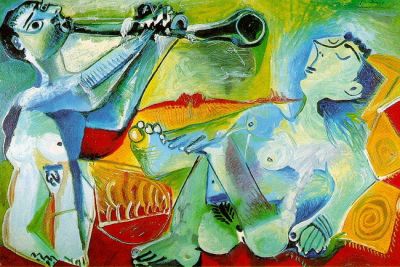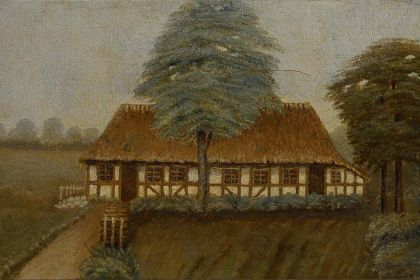WIND ENSEMBLE
Mozart's rewritten serenade inspired by street musicians

Serenade by Pablo Picasso
The Serenade in E-flat major exists in two versions: a sextet of two clarinets, two bassoons, and two horns, and an octet that adds two oboes. The sextet came first, premiering in Vienne in 1781, at the home of the court painter Joseph Hickel.
Following the premiere, Mozart described it in a letter to his father (quoted from New York Philharmonic program notes):
"At 11 o’clock at night I was serenaded by two clarinets, two horns, and two bassoons playing my own music: I had written it for St. Theresa’s Day for Frau von Hickel’s sister, or rather the sister-in-law of Herr von Hickel, the court painter, at whose house it was performed for the first time. The six gentlemen who executed it are poor beggars who play together quite nicely all the same, especially the first clarinetist and the two horn players. And so these musicians had the front gate opened for them, and when they had formed up in the yard, they gave me, just as I was about to undress for bed, the most delightful surprise in the world with the opening E-flat chord".
The octet came the next year as Mozart’s attempt to get his music performed at the imperial court where Joseph II had established Harmoniemusik ensemble. Wind octets usually consisted of pairs of wind instruments: oboes, clarinets, French horns, and bassoons, as in this piece, although basset horns and English horns also appeared. Many of the serenades written for Harmoniemusik were intended to be performed outdoors, as Mozart’s notes suggest, so that the musicians were free to move as they pleased while playing.
Here is the octet serenade performed by The Scottish National Orchestra Wind Ensemble:



